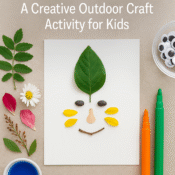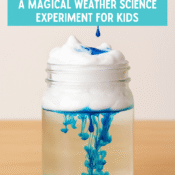
Sunlight Sleuths: Light and Shadow Explorations
Rediscovering the Power of Sunlight
Children are naturally fascinated by sunlight—how it warms the skin, makes rainbows through glass, and creates mysterious shadows. Yet beyond these wonders, light and shadow play offer exciting entry points into early science concepts such as solar energy, time-telling, and light behavior. In this edition of our “Nature Explorers” series, we’re going full sunshine mode, helping kids investigate how light moves, bends, and creates contrast with just a few household materials.
Let’s help young explorers turn every sunny day into a science lab!
The Science of Light and Shadows
Sunlight is the most accessible source of energy and information about the world around us. Through reflection, absorption, and refraction, light behaves in predictable yet visually stunning ways. Shadows, for example, are simply created when an object blocks light—yet their length and position change with the sun’s movement.
This blog invites families and educators to explore these concepts through hands-on activities designed for all experience levels.
Core Activities for Curious Minds
These two projects introduce young learners to light’s properties while sparking creativity and curiosity.
1. Solar Oven with Pizza Box
Objective: Learn how sunlight can be harnessed to cook food through reflection and heat concentration.
Materials:
- Pizza box (clean and empty)
- Aluminium foil
- Plastic wrap or clear food-safe sheet
- Black construction paper
- Tape and scissors
- Stick (for propping the lid)
- S’mores or cheese crackers for testing
Steps:
- Cut a flap in the pizza box lid, leaving one side attached.
- Line the inside of the flap with aluminium foil.
- Tape plastic wrap under the opening to create a window.
- Place black paper at the bottom of the box.
- Place the food item on top of the black paper.
- Close the lid and angle the foil flap to reflect sunlight into the box.
- Prop it with a stick and wait for 30–60 minutes.
What to Observe: The foil reflects sunlight, the plastic creates a greenhouse effect, and the black paper absorbs heat. Kids can track the temperature or observe melting and cooking effects.
2. Shadow Measurement Stick Experiment
Objective: Observe how shadows change over time and connect them to the sun’s movement.
Materials:
- Yardstick, broom handle, or sturdy stick
- Tape measure or ruler
- Sidewalk chalk or notebook
- Timer or watch
Steps:
- Insert the stick upright into soil or stand it securely.
- Mark the tip of the shadow with chalk or note it in a journal.
- Return every 30–60 minutes to mark the new shadow tip.
- Measure shadow length and observe the angle.
What to Observe: Shadows grow shorter around noon and longer in the morning and late afternoon. This experiment introduces solar angles and daily cycles.
Quick Experiments on the Go
No sun or short on time? Try these easy swaps.
- Leaf Chlorophyll Rubbing: Place a leaf under paper and rub with a crayon. Watch the green pigment transfer, revealing chlorophyll.
- Homemade Sundial: Tape a pencil upright on paper outdoors. Mark shadow positions hourly and label the time. You’ve just built a clock with sunlight!
Enrich the Experience
Extend the learning with:
- Comparing materials: Which reflect or absorb more light?
- Creating art using natural shadows from toys or leaves
- Reading “Sun Up, Sun Down” by Gail Gibbons for a picture-book approach to daily solar rhythms
Invite children to take sunlight snapshots with cameras or phones to build a light-and-shadow journal.
Bright Ideas Worth Remembering
Sunlight is more than warmth—it’s an everyday science teacher. Through simple but powerful activities, children can explore energy, time, and motion while enjoying the outdoors. These projects promote scientific thinking, careful observation, and a new appreciation for the rhythms of day and night.
Free Downloads
Includes: Solar Oven Instruction Guide, Shadow Tracker Chart, and Quick Cards: Leaf Rubbing + Sundial — all in one easy-to-print download.




